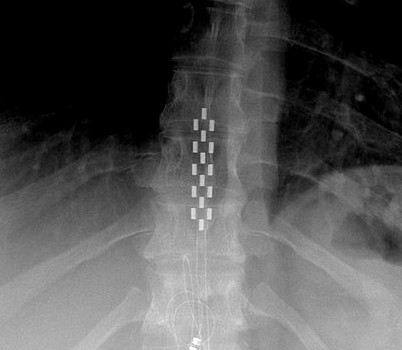Chronic pain is termed as long-lasting pain that keeps going than the standard recuperation time frame or that goes with a chronic health condition. Since this pain isn’t protective and isn’t an aftereffect of current injury, it is indicated to as “pathological” and is consequently treated as a condition, not as a symptom. Chronic pain may keep individuals away from working, eating appropriately, taking part in physical activity or enjoying life.
In the procedure of spinal cord stimulation, the technique is utilized to relieve pain that delivers a low-voltage electrical current constantly to the spinal cord in order to block the sensation of pain. Spinal cord stimulation is the most generally utilized implantable neurostimulation innovation for management of pain syndromes.
As per the research, around 50,000 neurostimulators are implanted worldwide every year. Furthermore, the procedure of spinal cord stimulation is broadly recognized, and also FDA- approved medical treatment in order to treat chronic pain of the trunk and limbs, that include:
- Back
- Legs
- Arms
Moreover, there are three spinal cord stimulation devices types:
- In the case of conventional systems, this needs minor effort on the patient’s end for maintenance. Yet, a slight surgery is needed to replace the power source when it runs out.
- The second one is the radiofrequency. In this procedure, the system is intended to support therapy over long periods at the highest output level. On account of its powerful abilities, this system is appropriate for the most difficult cases in which there is complex, multi-extremity pain. With the radiofrequency system, the patient is required to wear an outer power source to trigger stimulation.
- The recent advancement in the spinal cord stimulation is the rechargeable system. In this case, the patient is required for recharging the power source in case it runs low. As per the fact, a rechargeable system commonly keeps going longer than a customary system.
The Criteria of Patient Selection for Spinal Cord Stimulation:
- Pain isn’t related with malignancy
- Unsatisfactory reaction to conventional treatment for at least six months
- Revision surgical procedure is impossible or would have a low possibility of success
- No pacemaker or other medical contraindications
- No critical psychiatric complications, including somatization
- Readiness to stop unsuitable medication use before implantation
- No related litigation
- Capability to give informed consent for the technique
What Are the Potential Advantages of Spinal Cord Stimulation?
This technique is a type of neuromodulation that works in a way of blocking pain signals in nerves from getting the brain. Furthermore lessening pain, and other vital advantages are as follows:
- Enhanced functioning
- Better activity and mobility
- Lessened opioid [narcotic] use
- Less requirement for other pain medications
- Less reliance on bracing
- Better sleep
The results differ from individual to individual, and it is critical to comprehend that spinal cord stimulation may work in a way to help decrease pain, yet not dispose of it.


